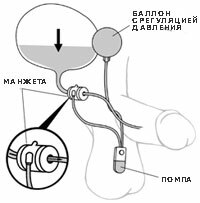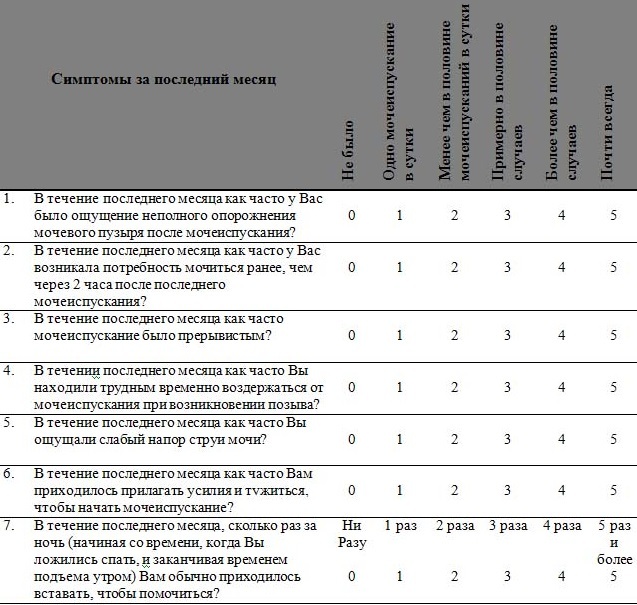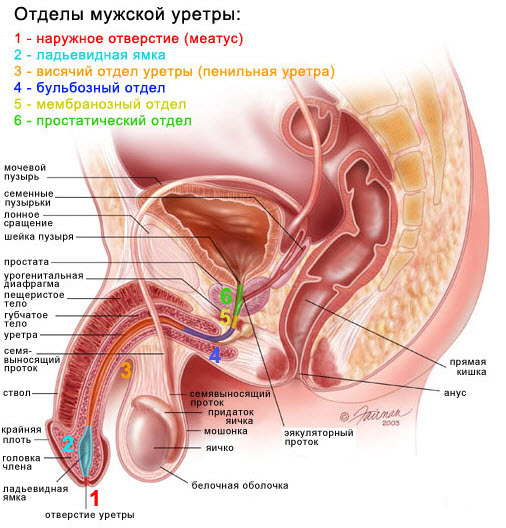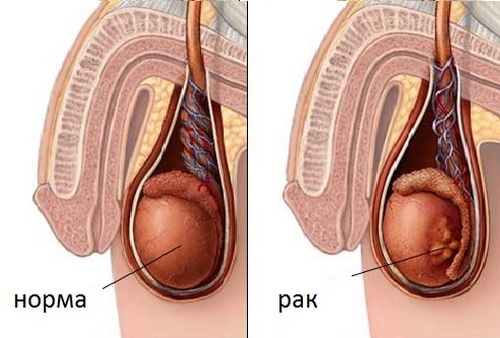Treatment of urinary incontinence in men
Treatment of urinary incontinence( incontinence) can be carried out in such directions as:
- Treatment of a hyperactive bladder( GAMP) is the most common cause of urinary tract disorders in men;
- Treatment of enuresis( bedwetting);
- Treatment of urinary incontinence after prostate surgery, consisting of:
- training of pubic-coccygeal muscles in conjunction with the procedure of electrostimulation;
- pharmacotherapy GAMP( M-cholinolytics);
- surgical treatment with ineffectiveness of previous methods.
- Treatment of urine leakage after urination:
This type of urinary incontinence is typical for men with stricture of the urethra or other cause of obstruction, and diverticula of the urethra are less likely to be detected. Pathology is characterized by a delay in urine in the onion section of the urethra with its release during movement or under the influence of gravity. Such symptoms are often found in healthy men( 17%), and in patients with lower urinary tract syndrome( LUTS) it is 67%.Drug treatment is ineffective. Solving the problem can somehow be helped by a careful "surrender" of the urethra after urination or performing rhythmic pelvic movements before wearing panties. In some cases, exercises for pelvic floor muscles are useful.
Conservative treatment
Conservative methods have a positive effect and create a favorable soil for the main treatment, and in mild cases, pathologies are the only treatment.
- Quitting smoking can reduce incontinence in 1.5 times.
- Weight normalization. Unlike women, the normalization of weight in men has a less pronounced therapeutic effect, but it is still recommended by doctors as a positive factor.
- Training of pelvic muscles. Has a therapeutic effect with different etiology of the disease. To do this, the patient must make a t. The Kegel exercise aimed at training the pubic-coccygeal muscle.
- Neuromodulation. It involves the action of a weak electric current to stimulate the nerve endings responsible for the transmission of urinary signals. Neuromodulation is used to restore the lost mechanism of urination.
Medication:
- alpha blockers;
- inhibitors of 5-alpha reductase;
- imipramine( Tofranil).
Surgical treatment
Surgical treatment may be necessary in the absence of a positive effect of conservative treatment for 6 months or more in the following cases:
- Postoperative complications in the treatment of prostate and bladder cancer that caused disorders of the sphincter apparatus of the bladder.
- After injuries.
- Congenital pathologies( exstrophy, epispadia).
- Bladder pathology in the form of a significant decrease in its volume( bladder contractility), a severe degree of GAMP not responding to conservative treatment for half a year;
- Presence of urethrectectal and urethrotic fistulas.
Surgical options for disorders of the sphincter apparatus:
- Implantation of the official sphincter of the bladder
The operation is successful in 75-80% of patients with incontinence after operations on the prostate. Implantation of an artificial sphincter is indicated in men with a sphincter deficiency, manifested by leakage of urine, or damage to nerve fibers responsible for contraction of the sphincter muscles. Has no therapeutic effect on patients with uncontrolled contractions of the bladder.
 The patient is implanted with an artificial sphincter consisting of an inflatable cuff that wraps the urethra, a reservoir placed in the abdominal area, and a pump in the scrotum. The mechanism of the artificial sphincter is as follows: water, filling the cuff, covers the urethra, allowing to urinate when convenient. In order to perform urination, it is enough to press the pump in the scrotum and water, the created pressure on the cuff will flow into the reservoir, which will open the urethra. After a while( up to 5 minutes) after emptying the bladder, the cuff will again fill with water and block the urethra.
The patient is implanted with an artificial sphincter consisting of an inflatable cuff that wraps the urethra, a reservoir placed in the abdominal area, and a pump in the scrotum. The mechanism of the artificial sphincter is as follows: water, filling the cuff, covers the urethra, allowing to urinate when convenient. In order to perform urination, it is enough to press the pump in the scrotum and water, the created pressure on the cuff will flow into the reservoir, which will open the urethra. After a while( up to 5 minutes) after emptying the bladder, the cuff will again fill with water and block the urethra.
- Injection therapy
Injection therapy can achieve positive results in half of patients. However, the temporary effect of the procedure, due to resorption of collagen, does not make injecting therapy a desirable method of treatment.
- Sling operations
The effect is observed in 55-76% of operated patients. Surgical intervention is performed to create a mechanism for retaining urine.
Recommended for viewing:



